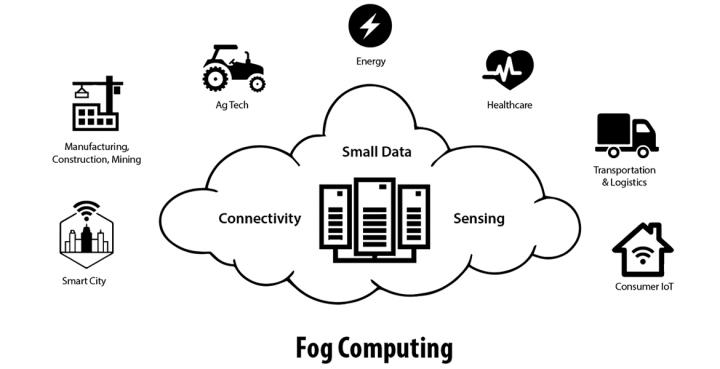Fog computing, also known as fog networking or fogging is an architecture that uses edge devices to carry out substantial amounts of computation, storage, and communication locally and routed over the Internet backbone.

Fog computing refers to an alternative to cloud computing. This approach seizes upon the dual problem of the rapid increase of computing devices and the opportunity presented by the data those devices generate by locating certain resources and transactions at the edge of a network.
Must Read: How Utilization of Blockchain Looks Like in Cloud Computing
Many of these devices generate voluminous raw data and rather than forwarding all this data to cloud-based servers to be processed, the idea behind fog computing is to do as much processing as possible using computing units co-located with the data-generating devices. This assures that processed data is forwarded rather than raw data and bandwidth requirements are reduced.
Having all endpoints connecting to and sending raw data to the cloud over the internet can have privacy, security and legal implications, especially when we’re dealing with sensitive data subject to regulations in different countries. We can overcome this with the help of the popular fog computing applications that include smart grids, smart cities, smart buildings, vehicle networks and software-defined networks.
Interesting Read: Is Underwater Cloud Computing a Real Thing?
Adding to the benefits, the processed data is most likely to be needed by the same devices that generated the data so that by processing locally rather than remotely, the latency between input and response is minimized. This idea is not entirely new and we all were aware of it when we had non-cloud-computing scenarios. The special-purpose hardware has long been used to reduce latency and reduce the burden on a CPU.
Deriving from that, a fog computing framework has a variety of components and functions, depending on its application. It has the option to include computing gateways that accept data from data sources or diverse collection endpoints such as routers and switches connecting assets within a network.
The fact is that the cloud is getting cluttered due to the enormous number of devices connecting to the internet. And since it is not viable in some cases, it has become crucial to use fog computing for IoT devices to handle the enormous data generated by these devices.
Recommended Read: Disclosing Cloud Computing Myths
For more articles like “What is Fog Computing?”, follow us on Facebook, Twitter, and LinkedIn.